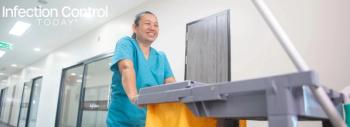
Streamlined IFU Access Boosts Infection Control and Staff Efficiency

A hospital-wide quality improvement project has transformed how staff access critical manufacturer instructions for use (IFUs), improving infection prevention compliance and saving time through a standardized, user-friendly digital system supported by unit-based training and interdepartmental collaboration.
Accessing manufacturer instructions for use (IFUs) has long been a challenge in health care facilities, where staff often face delays and inefficiencies trying to locate essential documents. These gaps can hinder infection prevention adherence and lead to inconsistencies in equipment handling and disinfection practices.
To address this, a 758-bed hospital implemented a standardized, organization-wide approach to streamline IFU access. The initiative, led by a multidisciplinary quality improvement team, focused on creating unit-specific electronic sites that house relevant IFUs tailored to each department’s equipment and protocols. Key to the success was the super user training model, where selected staff from each unit were trained to build and manage their team’s IFU repository while also teaching peers how to navigate and use the resource effectively.
This project involved collaboration across inpatient, ambulatory, and primary care units. During evaluation audits, staff demonstrated significantly improved ability to retrieve IFUs quickly and accurately. These gains extended beyond access alone; health care workers also showed increased awareness of proper disinfectant contact times, a core infection control principle often embedded in IFU language. With clearer understanding, staff were better equipped to demonstrate and apply the correct contact duration during routine cleaning and disinfection, directly supporting infection prevention goals.
Standardized templates for IFU sites ensured ease of use and consistency across departments, while ongoing interprofessional collaboration sustained momentum and accountability. The hospital reports early success not only in improved retrieval times and adherence but also in culture change, as staff began to link manufacturer guidance directly with frontline infection control practices.
As the project scales further, leaders anticipate continued improvement in staff performance, adherence audit scores, and patient safety outcomes. The IFU access model now serves as a replicable template for other institutions facing similar challenges, showing how digital organization, shared ownership, and practical training can close long-standing gaps in infection control infrastructure.
The information was presented as a poster at the Association of Professionals in Infection Control and Epidemiology Conference and Expo, held in Phoenix, Arizona, from June 16 to 18, 2025, by Tammie Hull, MSN, MA, RN, CIC, LSSGBH. The coauthor was Payal M. Patel, MPH, CIC. Both authors are from the Nationwide Children’s Hospital in Columbus, Ohio.
Newsletter
Stay prepared and protected with Infection Control Today's newsletter, delivering essential updates, best practices, and expert insights for infection preventionists.






